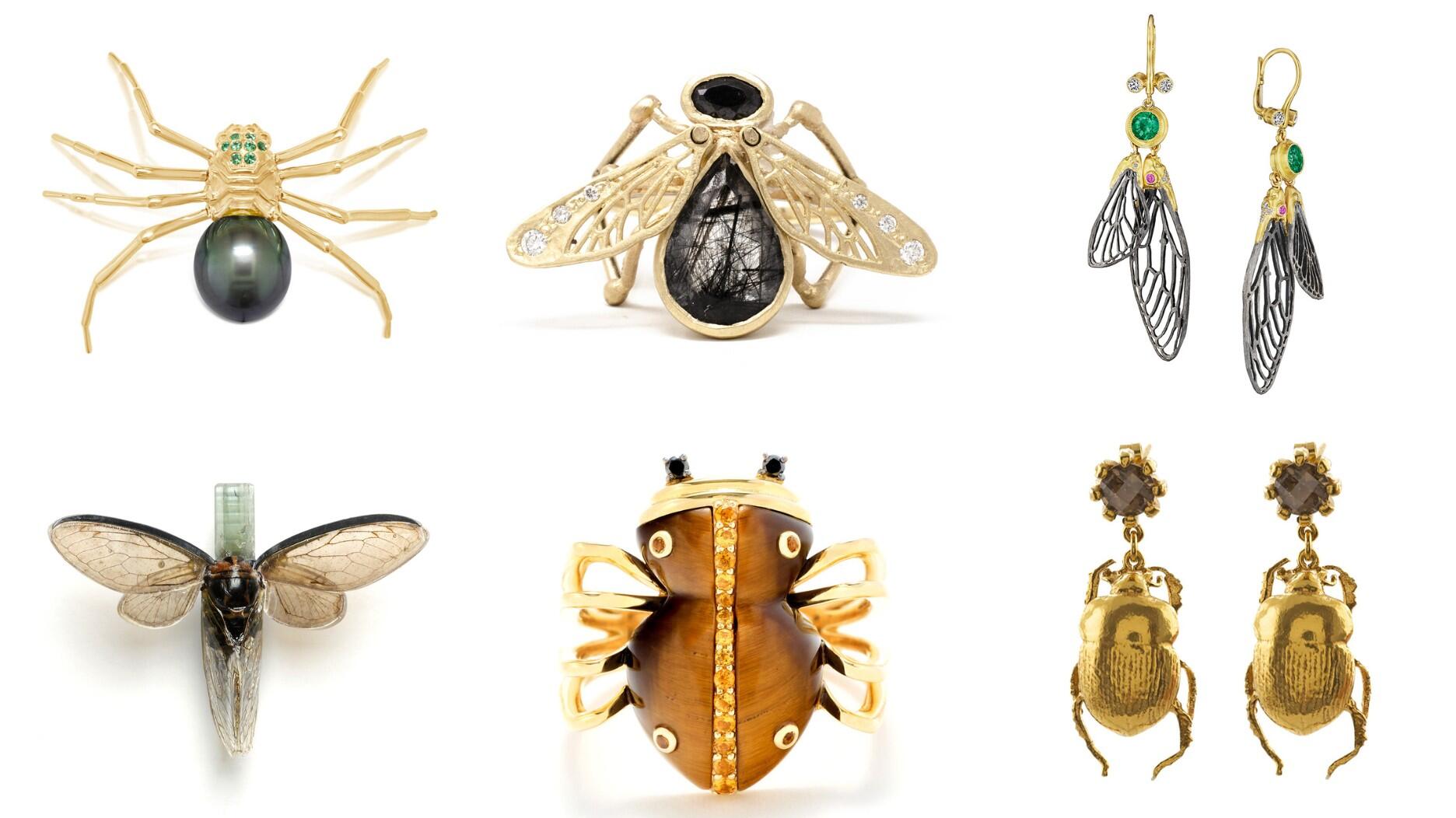Carlos Jose Hernandez and Joshua Zuazo were sentenced to life without the possibility of parole in the 2024 murder of Hussein “Sam” Murray.
3 Lessons from Lafayette
From the large sums of money that can be recovered from carpeting to the trichroism of tanzanite, Editor-in-Chief Michelle Graff shares what she learned over her weekend at Stuller headquarters.

Last week, I made my first trip to Lafayette, La., headquarters of Stuller, the country’s largest jewelry manufacturer.
The kind folks at Stuller invited me down for their annual Bench Jeweler Workshop that, for the first time, included a Battle of the Benches.
When I wasn’t on the demo floor watching the four bench jewelers battle it out, I slipped into the side rooms for educational sessions on diamonds, gemstones and refining, all of which were great.
Here are just a few of the things I learned.
Jewelers might have thousands of dollars trapped in their carpets.
At the suggestion of National Jeweler Publisher Matthew Tratner, I attended a Saturday afternoon seminar on maximizing precious metal recovery profits with Dave Siminski of United Precious Metals and was very glad I did.
Part of Siminski’s presentation focused on how jewelers should handle the low-grade material that’s left behind around the bench--bench sweeps, filings and grindings, polishing dust, floor sweeps and carpeting.
Carpeting, Siminski said, is the “biggest thing going right now.”
He said he recently picked up 6,000 pounds of carpeting that had been in a jewelry-making facility in Tennessee for three years that yielded 90 ounces of precious metals. At today’s current gold price ($1,237) that works out to be more than $110,000 found amongst the fibers.
Siminski’s lesson here: “Never throw out the carpet.”
Precious metals also can be found in the ceiling tiles, around the air ducts, on linoleum tile and even on the paper towels people use to wash their hands after making jewelry or clean up the area around the bench. Those paper towels, Siminski said, can be added to the floor sweeps.
He also advised jewelers to install something in their sink to prevent loss, such as the Magic Drain Trap, and have a sticky mat like the Gold Mat to grab precious metals from the soles of employees’ shoes.
Siminski’s overall message: There’s money to be had in any area where a jeweler is making or repairing jewelry, so don’t just throw out things.
“There is no waste in precious metals,” he said.
STOP before identifying colored gemstones.
On Friday afternoon I went to the Basic Gemstone Identification course hosted by Gary Venable, Stuller’s gemstones senior product manager, and Harold Dupuy, the vice president of strategic analysis. Colored gemstones aren’t my beat around here (that honor belongs to my senior editor, Brecken)
The basic message of the presentation was when going to identify a colored gemstone, don’t start out with the answer (which is also sage advice for journalists when they start working on a story.)
Venable and Dupuy preached the STOP method when preparing to analyze a stone: Stop, Think, Observe, Proceed.
Also, here are two fun did-you-knows I picked up from the gemstone presentation.
--Iolite was once also known as “water sapphire” because of its strong pleochroism. It can look blue, like sapphire, from one side and clear from another angle.
--Tanzanite exhibits trichroism. If you see only two colors in tanzanite rough, then it’s been treated.
I am not good at grading diamonds for clarity.
I do, however, seem to have a knack for color grading.
Also on Saturday, I had the chance to attend Carl Lehnhardt’s afternoon session on Basic Diamond Grading, which I really enjoyed.
The session was divided into two parts. Lehnhardt began by giving a rundown on the four Cs and the history of diamond grading in general. After his presentation, diamonds were distributed and those in the class got to try their hand at assigning color, clarity and cut grades to the stones.
For those of you who don’t know him, Lehnhardt is Stuller’s diamond buyer who has decades of experience in the industry and is a fount of knowledge on the diamond market. (Later that same afternoon, Lehnhardt presented a Diamond Market Recap alongside Stuller Vice President of Diamonds and Gemstones Stanley Zale; I’ll be writing more on that later.)
Here are a few fun did-you-knows I picked up during Lehnhardt’s presentation.
--The two types of crystal inclusions you will see in diamonds are red (garnet) and green (peridot).
--GE was the first company to successfully grow a diamond in the lab, achieving this feat in the mid-1950s. It was, however, an industrial diamond. Gem-quality lab-grown diamonds did not come around until the 1970s, and the first one was made in Japan.
--All lab-grown diamonds are Type IIa, meaning they are void of nitrogen and boron. (Type IIb diamonds are the natural blues. They have no nitrogen impurities but do contain boron, which is what gives them their blue hue.) Only 2 percent of the world’s mined diamonds are Type IIa, which means if a diamond is Type IIa, then it needs to be further tested to ensure it’s not lab grown. Try as they might, the world’s diamond growers have not, to anyone’s knowledge, been able to grow a Type I diamond--yet.
Have a great weekend everyone!
Editor's Note: This post was updated on April 8, 2016 to note that Dave Siminski picked up 6,000 pounds of carpeting from a facility in Tennesse, not six, as was previously stated.
The Latest

Yood will serve alongside Eduard Stefanescu, the sustainability manager for C.Hafner, a precious metals refiner in Germany.

The New Orleans jeweler is also hosting pop-up jewelry boutiques in New York City and Dallas.

How Jewelers of America’s 20 Under 40 are leading to ensure a brighter future for the jewelry industry.

Set in a Tiffany & Co. necklace, it sold for $4.2 million, the highest price and price per carat paid for a Paraíba tourmaline at auction.


The jeweler’s “Deep Freeze” display showcases its iconic jewelry designs frozen in a vintage icebox.

Take luxury gifting to new heights this holiday season with the jeweler’s showstopping 12-carat sphene ring.

Roseco’s 704-page catalog showcases new lab-grown diamonds, findings, tools & more—available in print or interactive digital editions.

This year's theme is “Unveiling the Depths of the Ocean.”

In its annual report, Pinterest noted an increase in searches for brooches, heirloom jewelry, and ‘80s luxury.

Starting Jan. 1, customers can request the service for opal, peridot, and demantoid garnet.

The 111-year-old retailer celebrated the opening of its new location in Salem, New Hampshire, which is its third store in the state.

The new catalog features its most popular chains as well as new styles.

The filmmaker’s personal F.P. Journe “FFC” prototype was the star of Phillips’ recent record-setting watch auction in New York.

The new location in the Design District pays homage to Miami’s Art Deco heritage and its connection to the ocean.

Inflations, tariffs, and politics—including the government shutdown—were among consumers’ top concerns last month.

“Longtime favorite” presenters, as well as first-time speakers, will lead talks and workshops at the annual event in Tucson next year.

Silas Smith of Meridian Metalworks won the challenge with his pendant that blends Australian and American landscapes.

The sale of the 31.68-carat, sunset-hued stone was part of Sotheby’s first series of events and auctions in Abu Dhabi.

Most customers who walk into your store this month have made up their minds. Your job is to validate their choice, Emmanuel Raheb writes.

The collection features characters and motifs from Ukrainian folklore, including an enchanted mirror and a magic egg.

MatrixGold 3.11, the newest version of the jewelry design program, offers more flexibility, precision, and creative control.

The pavilion will be part of the 2026 JA New York Spring show, scheduled for March 15 to 17.

Kadet, a 1994 National Jeweler Retailer Hall of Fame inductee, helped grow the family-owned retailer in the Chicago area and beyond.

Billed as the world’s smallest wearable, Lumia Health’s new smart earrings have a health tracker subtly embedded in the back.

Don’t let those with December birthdays feel blue. Help them celebrate their month with blue zircon, turquoise, and tanzanite.

The new pink sapphire version of the piece dances with its wearer in the brand’s “Icons After Dark” holiday campaign.


























